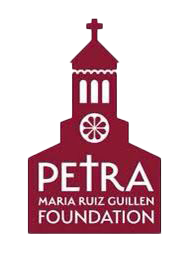History
Life as a Catechist

During these gatherings, Petra and her fellow catechists would prepare children for their sacraments which would later be completed and celebrated, at times in the hundreds, at Our Lady of Guadalupe Catholic Church.
To become a catechist, Petra and other young women were required to make a promise to follow strict rules established by Sister Benitia which would develop their own religious, educational, and spiritual formation.
Additionally, the catechists were required to study the bible, attend daily mass, teach catechism to public school students, attend retreats, do chores around the church and convent, serve in their communities, and resist temptations of sin. These promises were given for six months of service.
Afterward, the growing number of catechists would renew their promises or withdraw from the Catechists of Divine Providence. Catechists were on probation for one year. After three years of faithful commitment, catechists were entitled to receive a ring bearing the image of the Immaculate Conception and recognition as a Senior Catechist of Divine Providence. Petra received her ring in May, 1935.
In 1932, two years after Sister Benitia began forming the Catechists of Divide Providence, Petra became one of the original twelve catechists who were required to follow new guidelines.
The catechists were responsible for visiting Mexican families in nearby neighborhood homes or any public place to provide Catholic instruction and education. The catechists dressed like nuns when they traveled.
The uniform included a black dress, pleated skirt with white collar and cuffs, black and white veil on their head, a long black beaded rosary around their waist, and a silver crucifix on a necklace around their neck. In addition to teaching, the catechists would also help with food and clothing distributions at Our Lady of Guadalupe Church in Second Ward and in the surrounding neighborhoods.
They traveled in pairs to Sixth Ward, Fifth Ward, and Magnolia either by foot or rail car to meet with people in their homes, their lawns, or wherever possible. In time, these meeting places became known as Catechetical centers.
